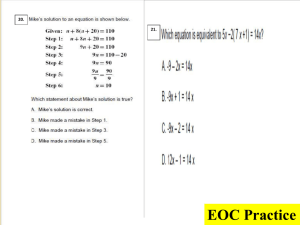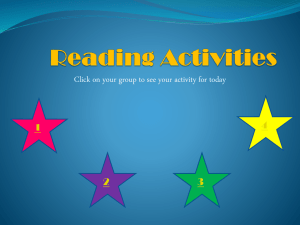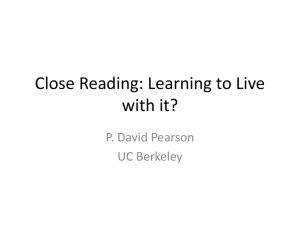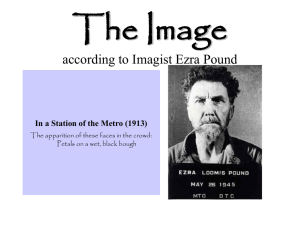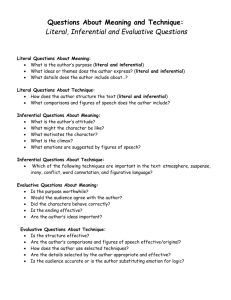Grade 8 U1 Task Sheet and Checklist
advertisement
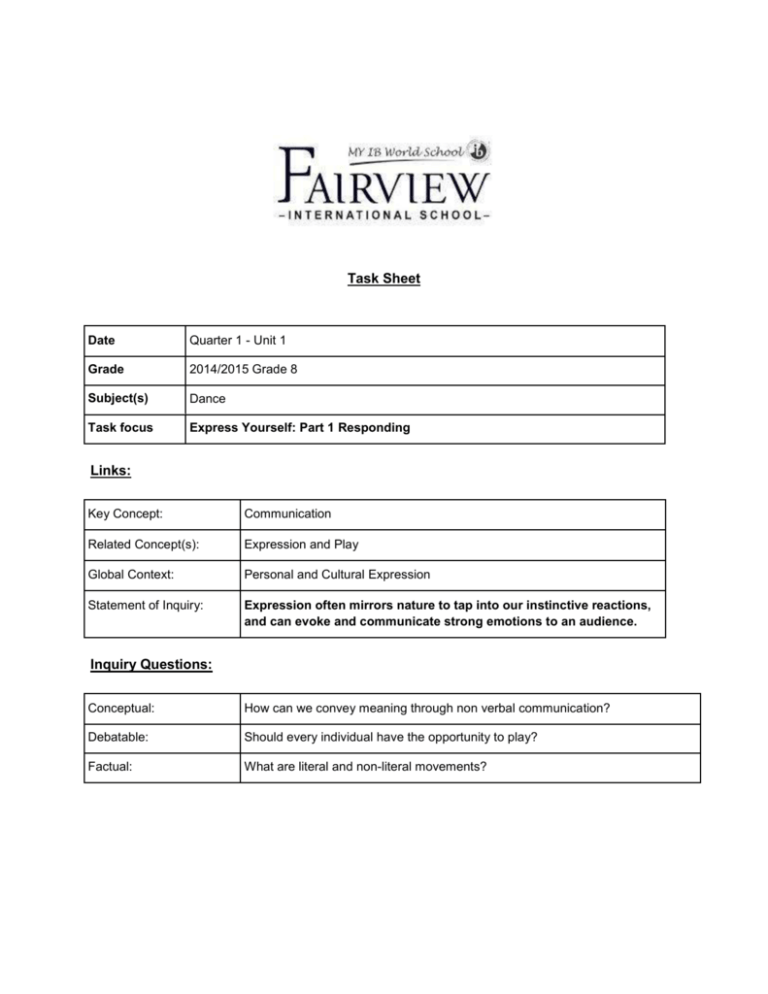
Task Sheet Date Quarter 1 - Unit 1 Grade 2014/2015 Grade 8 Subject(s) Dance Task focus Express Yourself: Part 1 Responding Links: Key Concept: Communication Related Concept(s): Expression and Play Global Context: Personal and Cultural Expression Statement of Inquiry: Expression often mirrors nature to tap into our instinctive reactions, and can evoke and communicate strong emotions to an audience. Inquiry Questions: Conceptual: How can we convey meaning through non verbal communication? Debatable: Should every individual have the opportunity to play? Factual: What are literal and non-literal movements? Approaches to Learning: Communication Skills ● Exchanging thoughts, messages and information effectively through interaction - Interpret and use effectively modes of nonverbal communication. ● Reading, writing and using language to gather and communicate information - Use and interpret a range of discipline-specific terms and symbols. You will need to express Literal and Non-Literal movements in order to communicate emotions to an audience. You will use and interpret a number of real-life situations through dance. Thinking Skills ● Critical thinking skills: Analysing and evaluating issues and ideas Identify trends and forecast possibilities. ● Creative thinking skills: Generating novel ideas and considering new perspectives - Practise visible thinking strategies and techniques. ● Transfer skills: Utilizing skills and knowledge in multiple contexts Combine knowledge, understanding and skills to create products or solutions. You are required to think about literal movements within the world today i.e. brushing your hair; how do we develop a dance from this? You will combine your knowledge, understanding and skills in order to play with literal and abstract movements. MYP Arts Objectives: A: Knowledge and Understanding - Demonstrate knowledge of the art form studied including concepts, processes and the use of appropriate language. - Use acquired knowledge to purposefully inform artistic decisions in the process of creating artwork. - Demonstrate knowledge of the role of the art form in original or displaced contexts. C: Creative Thinking - Demonstrate the exploration of ideas through the developmental process to a point of realisation. - Outline a clear and feasible artistic intention. - Outline alternatives, perspectives and imaginative solutions. Key Words: Literal Movement Non Literal Movement Abstract Dance Metacognition Gesture Task Description: You will interpret cue card through movements communicating a literal meaning. For example; Love, Hope, Grief. The movements that you create will literally represent Love, Hope and Grief. (Duet/trio performance). You will create a 1 minute (maximum) video that compares differences between Literal and Non-Literal movements. Assessment Criterion: Criterion Descriptor A1 Demonstrate knowledge and understanding of Literal and Non-Literal movements including concepts, processes, and the use of subject-specific terminology by: Identifying differences between Literal and Non-Literal movements. A2 Demonstrate an understanding of the role of Literal and Non-Literal movements in original or displaced contexts by: Illustrating movement examples for Literal and Non-Literal movements. A3 Use acquired knowledge to purposefully inform artistic decisions in the process of creating artwork by: Presenting gestures that have a literal meaning. C1 Develop a feasible, clear, imaginative and coherent artistic intention by: Using Literal and Non-Literal movements within your choreography . C2 Demonstrate a range and depth of creative-thinking behaviours by: Making suggestions for Literal and Non-Literal movements. C3 Demonstrate the exploration of ideas to shape artistic intention through to a point of realization by: Acknowledging Literal and Non-Literal movements within choreography. Complete


